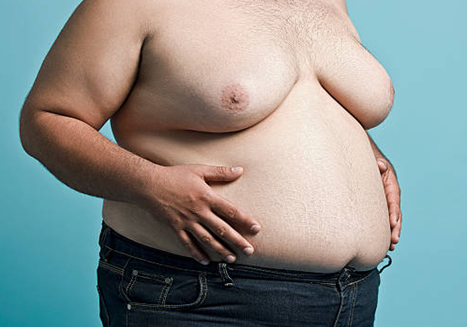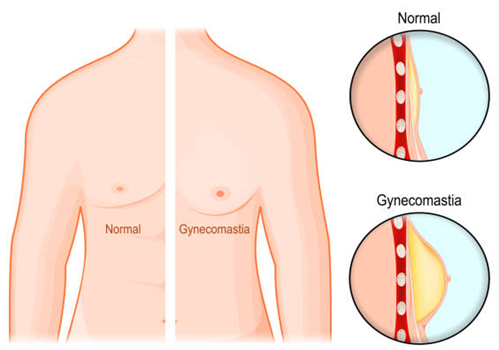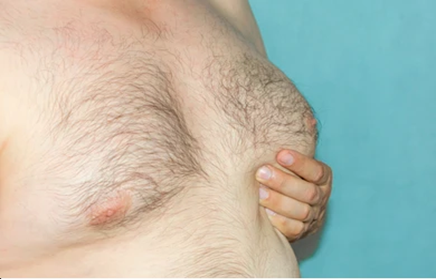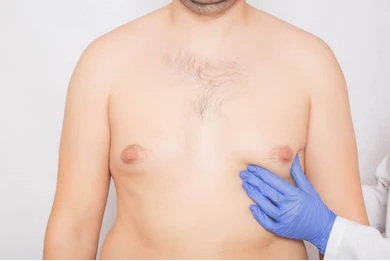
Struggling with obesity and gynecomastia can feel overwhelming, as it impacts physical health and self-esteem. Excess weight often leads to hormonal imbalances, triggering gynecomastia or enlarged male breast tissue. This dual challenge can seem impossible, but there are effective solutions available.
Dr. Harikiran Chekuri, a well-known plastic surgeon in Hyderabad at Redefine Clinic, specializes in addressing these concerns. Through personalized care and advanced techniques, Dr. Chekuri offers cost-effective solutions to address obesity and gynecomastia. He aims to restore physical appearance and overall well-being.
Does Obesity Cause Gynecomastia?

Obesity is a major cause of gynecomastia, a condition that affects around 15-25% of adult men worldwide. When you gain extra weight, it disrupts the hormonal balance in your body. This leads to increased oestrogen levels, the female hormone, relative to testosterone, the male hormone. This hormonal imbalance can cause gynecomastia. Studies have shown that up to 70% of adolescent boys with obesity develop enlarged breasts due to hormonal changes.
Moreover, excess fat can convert androgens into oestrogen, further stimulating breast tissue growth. As your weight increases, so does the risk of developing gynecomastia. This highlights the strong connection between obesity and gynecomastia.
How Common is Obesity Caused Gynecomastia?

Gynecomastia due to obesity affects a significant percentage of individuals dealing with obesity. Studies suggest that up to 65% of men with obesity may experience gynecomastia to some degree. This condition occurs when excess fat deposits lead to hormonal imbalances, resulting in the development of male breast tissue.
So, if you’re struggling with obesity and gynecomastia, you’re certainly not alone. But remember, effective treatments are available to help you regain confidence and overcome these challenges.
Symptoms of Obesity Induced Gynecomastia

- Breast Enlargement: Increased breast size, making them appear larger and fuller.
- Excess Fat Deposition: Accumulation of fat tissue in the chest area.
- Nipple Tenderness: Sensitivity or tenderness around the nipples due to hormonal imbalances.
- Psychological Distress: Feelings of embarrassment, self-consciousness, or low self-esteem.
Diagnosis of Obesity - Caused Gynecomastia

- Physical Examination:
Your doctor will examine your chest to assess breast enlargement.
- Medical History Review:
You’ll discuss your medical history and any medications or conditions that could cause gynecomastia.
- BMI Assessment:
Your doctor will calculate your BMI to check for obesity, with a BMI over 30 indicating obesity.
- Hormone Levels:
Blood tests will measure hormone levels like testosterone and oestrogen to identify imbalances.
- Imaging Tests:
Ultrasound or mammography may be used to examine breast tissue and detect any abnormalities.
Accurate diagnosis is critical for effective treatment. Discuss any concerns with your healthcare expert.
Types of Gynecomastia Due to Obesity
- Pseudogynecomastia:
In this type, the enlargement of male breasts is primarily due to excess fat accumulation rather than glandular tissue growth. It’s often seen in individuals with obesity, where increased body fat leads to the appearance of larger breasts.
- True Gynecomastia with Obesity:
While pseudogynecomastia is purely fat-related, true gynecomastia involves both excess fat and glandular tissue enlargement. In obese individuals, hormonal imbalances caused by excess fatty tissue can contribute to the development of true gynecomastia.
- Severe Gynecomastia:
In cases of severe obesity, gynecomastia can be more pronounced due to significant hormonal fluctuations and adipose tissue distribution. This can lead to larger breast size and more significant psychological distress.
By understanding the types of gynecomastia associated with obesity, individuals can better grasp the condition’s complexity and explore appropriate treatment options.
Treatments for Gynecomastia Caused by Obesity
Being a seasoned plastic and cosmetic surgeon, Dr. Harikiran Chekuri offers personalized treatment plans tailored to individual needs and goals. He utilizes minimally invasive procedures to address gynecomastia and ensure quick recovery.
- Weight Loss:
Your doctor may recommend losing excess weight through diet and exercise. It can help reduce gynecomastia due to obesity. Research suggests that losing as little as 5-10% of body weight can lead to a noticeable reduction in breast tissue size.
- Medical Interventions:
Your doctor might prescribe tamoxifen or aromatase inhibitors to regulate hormone levels and shrink breast tissue.
- Surgical Intervention:
In severe cases where lifestyle changes and medications aren’t effective, surgical options like liposuction or excision surgery may be considered to remove excess fat and glandular tissue.

- Liposuction
This procedure involves removing excess fat deposits from the chest area through a small incision. It results in a more smooth, contoured appearance.

- Surgical excision:
Experts recommend surgery in severe cases of significant glandular tissue. It involves removing glandular tissue to achieve a flatter, more masculine chest contour.
- Combined Approach:
Often, a combination of liposuction and surgery is used to address both fatty deposits and glandular tissue, ensuring comprehensive results.
By understanding these treatment options, you can make informed decisions with your medical expert to effectively treat obesity-related gynecomastia.


Recent Comments